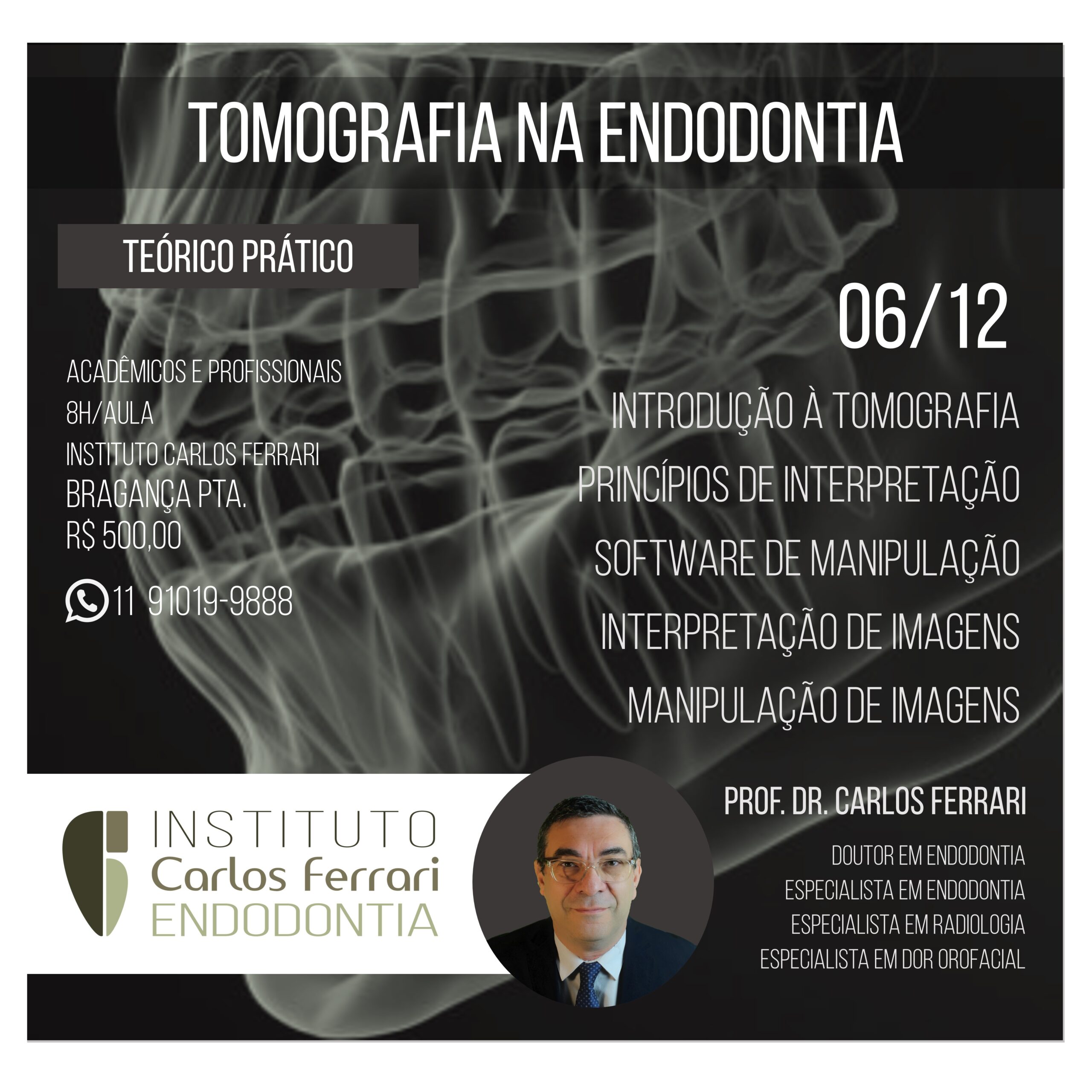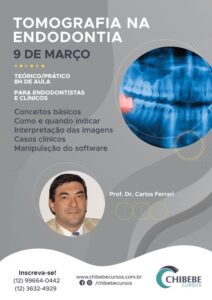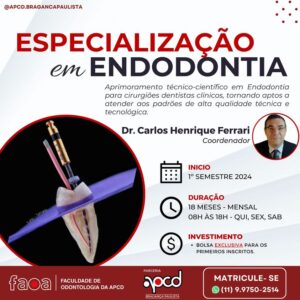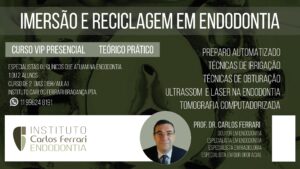Tomography in endodontics, 8-hour course at the Carlos Ferrari Institute.
Cone beam tomography is now a reality for planning, treatment and proservation of clinical cases in the endodontic routine. Professionals are increasingly seeking this resource as a support for their work and for a better diagnosis and treatment. Therefore, it is essential to be trained in this resource, which goes far beyond receiving the printed images in the documentation folder.
tomography applications in endodontics:
The tomography in endodontics has applications in various phases of treatment, from diagnosis to proservation of cases. A tomographic exam is capable of providing more information than the periapical radiograph, and in 30 to 60% of cases, there is a change in diagnosis or professional conduct in relation to that adopted only with the first exam.
Tomography is useful for three-dimensional observation of tooth morphology, revealing the pulp chamber, the floor and entrance of the canals and the number and shape of root canals much more accurately, and is useful for detecting additional canals. In addition, teeth with abnormal anatomy can be much better understood with the help of the examination, as well as anomalies and malformations. In retreatments, it is of paramount importance in detecting untreated canals, a common situation in flattened roots in the mesiodistal direction, mentioned above.
Tomography in endodontics can also be used to detect root cracks or fractures.
In the case of root resorption, tomography is a more effective means of locating and sizing gaps than intraoral radiographs. In addition, only a three-dimensional scan can assess the communications of the resorptions with the root canal, in cases of external resorption, or with the periodontal tissues, in cases of internal resorption.
Another application of tomography in endodontics, which is more effective at detecting hypodense images than radiography, concerns the observation of periapical lesions, both for diagnosis and differential diagnosis between non-endodontic lesions, surgical planning and follow-up. Tomography reveals images in the periapical apex earlier, at stages not yet observable on periapical radiography and with a higher percentage of detection.
When the hypodense images are located in the upper posterior teeth, the exam can be fundamental in the differential diagnosis of sinusitis of odontogenic origin, by revealing the communication of the lesions with the maxillary sinus, besides cortical disruption and thickening of the adjacent mucosa. This condition is common and underdiagnosed by both dentists and physicians.
One use of tomography that is useful both for planning paraendodontic surgery and for preventing accidents in invasive endodontic treatments beyond the apical foramen, in which patency and foraminal widening maneuvers are performed, is to assess the distances between apices and important anatomical structures, such as the maxillary sinus and mandibular canal, as well as to observe apical fenestrations prior to treatment. Observing the latter can also be useful for diagnosing long-term post-operative pain with no apparent cause
In dental trauma, tomography is useful to reveal crown and/or root and bone fractures, as well as images of empty alveolar space, typical of injuries involving tooth displacement . Tomography has been shown to be more efficient than panoramic radiographs in the observation of bone and alveolar fractures and than digital periapical radiographs in the detection of horizontal root fractures, even when the modification of the horizontal angulation of the x-rays was not able to reveal the fracture.
In cases of teeth with pulp chamber and root canal blocked by mineralization, a common situation in anterior teeth with a history of trauma, tomography, combined with prototyping technology, can be used through guides made in 3D printers, to guide the access of a surgical drill to the periapical region. Such treatment is called guided endodontic access.
Other applications in which tomography is also useful are the localization of foreign bodies, fractured instruments, perforations, evaluation of gutta-percha cone and/or obturator cement leakage and the various fields of research in endodontics.
tomography course in endodontics
The course will qualify the student, dental surgeon or endodontic specialist, to know, indicate and interpret cone beam tomography with endodontic purposes, and is composed of theoretical and practical modules, in which the student will be able to manipulate images in the software.





